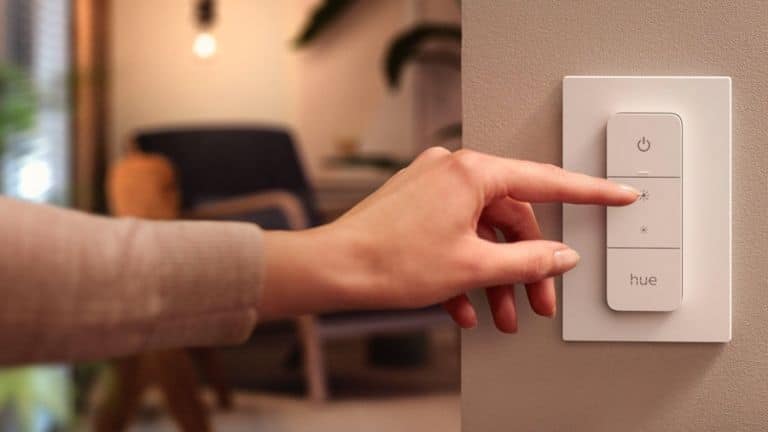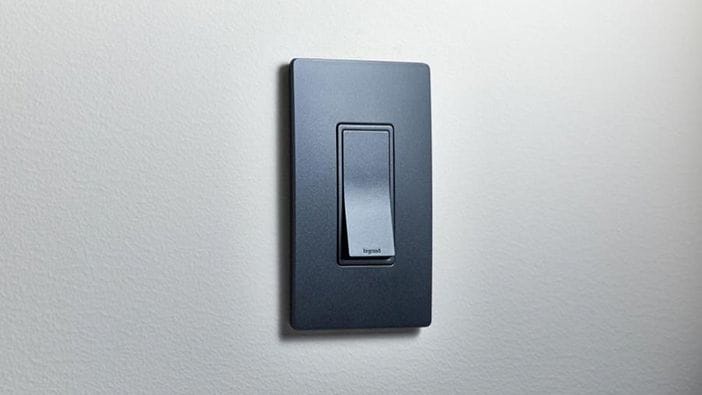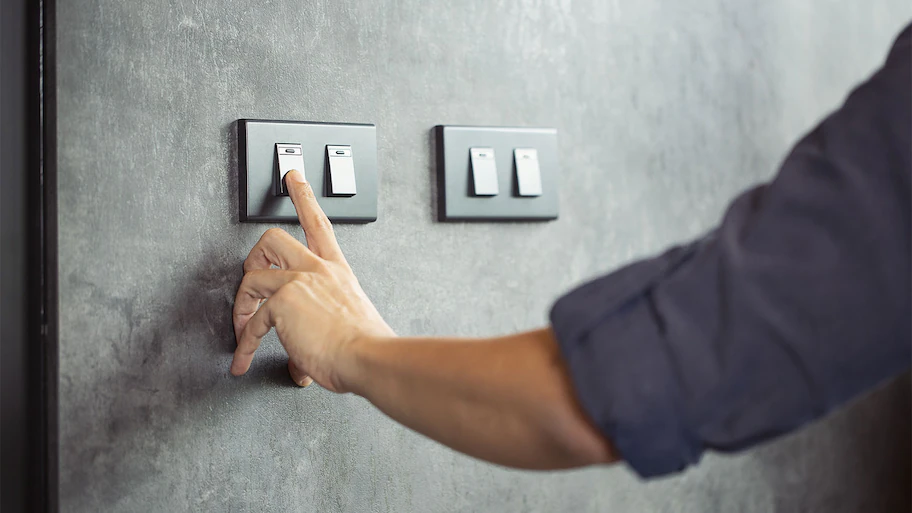Lighting switches used to be simple parts that are now used as home improvement solutions, featuring various designs and functions. There are switches with different styles, wiring needs and that can be programmed to perform different functions. That being said, choosing suitable electrical switches for your home or business can be tricky. However, as sophisticated as they’ve become, their basic function is still the same – turn it on to complete a circuit to allow electricity to flow through it, and turn it off to break the circuit and stop the flow of electricity.
Many people buy electrical switches after they’ve chosen the ideal recessed lighting, pendant or chandelier for their home makeover. So, let’s take a look at all the different types of switches and dimmers you can get for your home or business.
Types of Electrical Switches and Dimmers

First and foremost, you have to ensure you get a switch that’s compatible with the circuit where you need to install it, as well as your lighting requirements. Here are the most basic types of switches.
Key Light Switches
The most common switches used in household applications are single-pole switches that feature two terminals. Three-way switches feature three terminals, while four-way switches have four. These switches allow you to control lights from two or more switch locations. For example, the bottom and top of the stairwell, both ends of hallways, or large rooms with a few entrances. Dimmer switches control the light intensity, and you can generally replace any single-pole switch with a dimmer.
Special Light Switches
Besides the conventional rotary and toggle switches, there are specialty switches that allow you to do everything from changing the speed of your fans to turning on the lights when you walk into the room. Some offer time-programming capabilities or let you know whether your remote light is on or off. There are also decorative special switches that come in rock, turn or slide styles instead of toggle.
Single-Pole Switches

These switches feature two brass terminal screws and a toggle you can use to turn lights on and off. Most also come with a grounding screw that’s connected to the circuit’s ground wire. These switches can only control one fixture from a single location. When installing them, connect two hot wires to them. One terminal connects to the incoming power-source wire, and the other is used for connecting the outgoing hot wire to the lighting fixtures. These light switches are ideal for smaller rooms without multiple light sources.
Three-Way Switches
These switches, as their name implies, feature three terminals, and can be used to control one fixture from two locations. Since they’re always paired with a second switch, the toggles aren’t marked on or off. They’re typically found in long hallways or stairwells, allowing you to turn the lights on and off from the bottom and top, or one end or the other.
Four-Way Switches

These switches are similar to three-way switches, except they feature four terminals, allowing you to control one fixture from three locations. These switches need to be combined between two three-way switches in order to form a circuit. While they’re rarely used, they’re a suitable option for larger rooms that have multiple entrances.
Occupancy Switches
These switches are used in residential and commercial buildings. They help save energy, as they feature a motion detector that turns the light fixtures on once someone enters the building and leaves it on for a certain amount of time. These switches are ideal for cutting electricity costs in businesses.
Rotary Dimmer switches
Rotary dimmer switches are the most commonly used type of dimmer switch. You simply rotate the knob in either direction to change the intensity of the light.
Sliding Dimmer Switches
Sliding dimmer switches with an on and off toggle turns the light to the brightness you set it last. These switches are best for bedrooms where you want softer light in the morning and night, but don’t need any light throughout the day.
Wall-Control Dimmer Switches
These dimmer switches control and dim several different lighting fixtures, and they can be programmed to turn on a combination of fixtures at specific brightness with the simple push of a button.
Conclusion
As you can see, there are several different types of switches that are commonly used in a wide range of settings. Your choice will come down to your specific requirements and personal preferences. All of the aforementioned switch types are available in a wide range of styles and designs, allowing you to choose products that match your home’s or business’s interior for a uniform look. Most switches are quite affordable and you won’t have to spend enormous amounts of money on them, so they can be something you go for in order to change how your home looks on a budget. That, plus the added functionality of newer switches make them the go-to option for many home improvement projects.
























